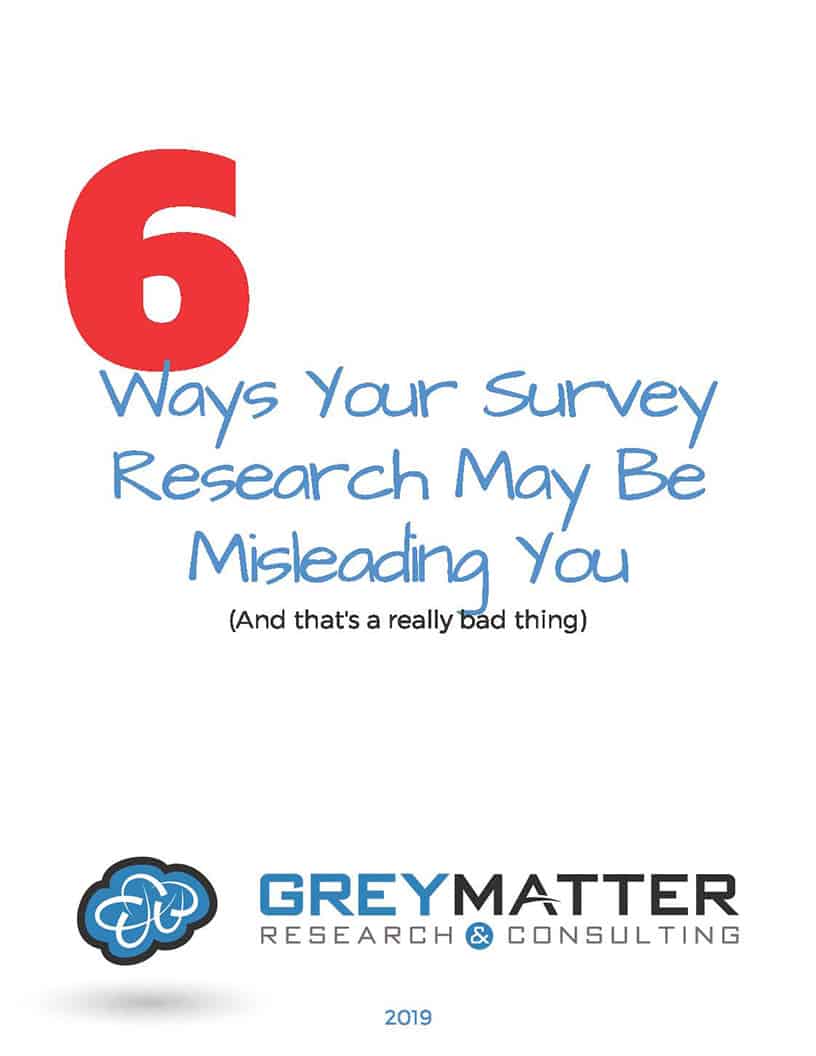
Only six ways?
Are there only six ways your survey research may be misleading you? Hopefully, there are none – but there’s about a 90% chance your research is affected by at least one of these six all-too-common problems.
Are you comfortable with doing surveys in which up to half of the responses you’re receiving are fraudulent? Is it okay getting a heavily biased group of respondents? Are you satisfied when people don’t actually look at what you put in front of them before they answer questions about it?
The only thing worse than no research is bad research…and there are many different ways you can unintentionally be receiving misleading data from your surveys.
90% are not doing enough
Research field managers and online panel vendors confide to Grey Matter Research that under 10% of their clients take steps to avoid some of these common problems. These are problems which, uncorrected, can give you disastrously misleading data. When you consider how many of their clients are supposed to be seasoned research professionals, it is particularly disturbing.
In recent tests, we discovered just how serious and widespread these problems are:
- 13% of respondents gave false information in order to try to qualify for a study.
- The donors who responded to one charitable organization’s recent survey had a lifetime value nearly double that of their typical donor. They were also six times more likely to be volunteers.
- Up to half of survey respondents didn’t actually read messaging statements that were being tested, but still answered all the questions about those messages.
Avoidable and correctable
We’re not talking minor problems here. But the good news is that you can avoid and/or correct these problems.
In 6 Ways Your Survey Research May Be Misleading You, you will learn about common research problems that most people – even the experts – aren’t addressing sufficiently.
But they’re professionals!
You hired a professional research firm, so these problems aren’t impacting your research…right? Again, those who deal with these projects every day tell us not even one out of ten researchers they deal with are doing what’s necessary to avoid or fix the problems. That means you have about a 90% chance your studies are being affected. Read our latest report to find out how.
Please e-mail ron@greymatterresearch.com for a free copy of 6 Ways Your Survey Research May Be Misleading You.
